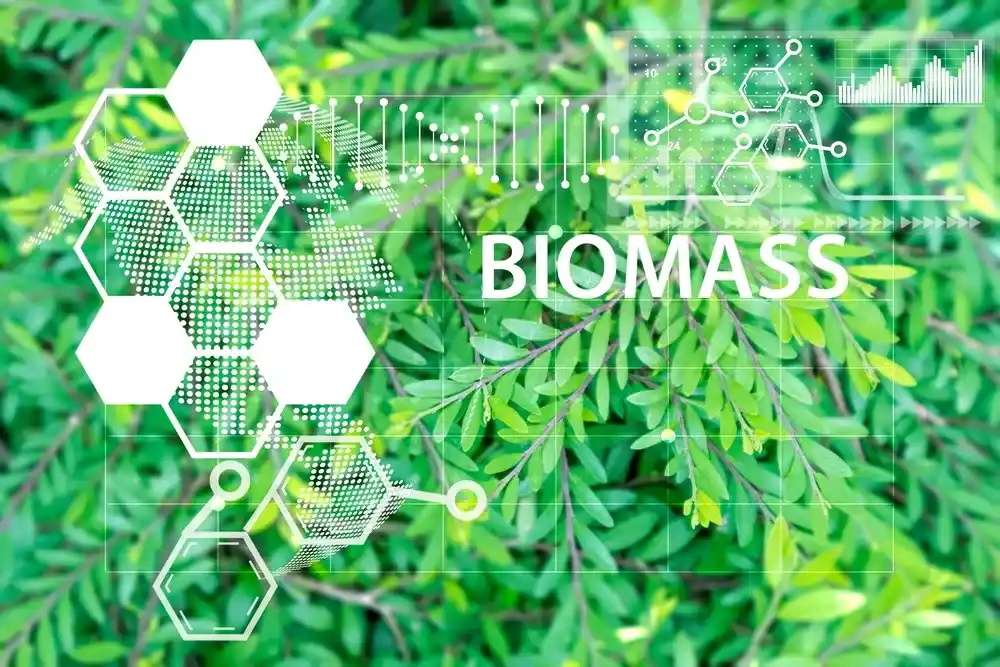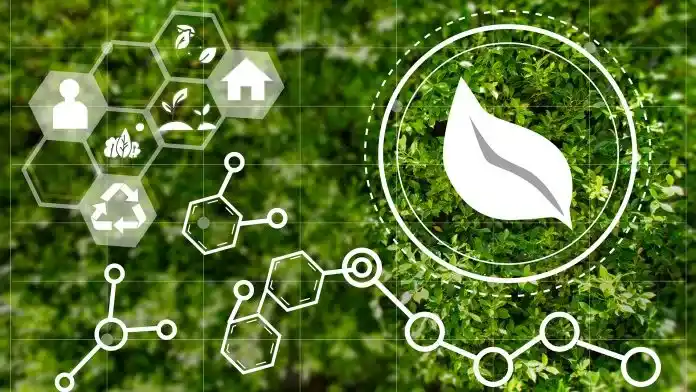Biofuels are produced using three types of reactions—chemical, thermal, and biochemical—which are the main pathways in the process of converting biomass into usable energy.
- 021-91034194
- Info@pishco.ir
- Tehran, Sa'adat Abad
Home » What is biomass and what are its uses?
Biomass is a word equivalent to the English term “Biomass” and can be simply defined as follows: Bio mass refers to all materials that originate from living organisms; that is, they were once living organisms, or were obtained from their biological activities, or remained as biological waste.
Although we know that fossil resources also originally came from ancient biomass, their difference lies in the fact that fossil fuels are obtained from the biological remains of living organisms that lived in the distant past, and this process took place under specific conditions of high pressure and temperature.
Biomass is a renewable energy source that is derived from biological materials derived from living organisms or their remains. This source often consists of organic compounds that are utilized in energy production processes such as electricity or heat generation. For example, plant pruning waste, wood residues, forest waste, animal manure, and other biological residues can be used as biomass.
Biomass is a key source of renewable energy and refers to any living material that can grow and reproduce through natural processes. This includes forests, plant parts, leaves, animal waste, municipal waste, and food waste. These compounds are capable of storing energy within themselves.
In fact, during the process of photosynthesis, plants are able to store energy in their biological structure by absorbing solar energy and receiving carbon dioxide from the air and water from the soil. This latent energy can be converted into various types of usable energy when needed.
Biomass has high potential for producing electricity, heat, liquid and gaseous fuels, as well as various chemical applications, and has occupied a significant position among other renewable energy sources.
Suggested article: What is biofuel and what are its uses?

Bio mass energy is a renewable energy source that is produced by converting organic matter into usable forms of energy. This energy can be obtained in two main ways: first, by burning bio mass directly, and second, by processing it to produce biofuels. The latter method is more complex because it involves more complex processes such as chemical, biological, and thermal reactions.
Biomass plants play a key role in these processes; they can produce a variety of biofuels using biochemical pathways, thermal reactions, or chemical compounds. In this article, we will examine all three main pathways for converting biomass to biofuels, as well as how these resources can be directly converted to energy.
In the following, the role of these three types of reactions (thermal, chemical, and biochemical) in various processes of energy production from biomass will be discussed, and how they fit into the overall perspective of biomass utilization will be explained.
Recommended article: Clean fuel and energy
Energy production from biomass, similar to fossil fuels, is carried out with the aim of providing electricity and heat. is one of the oldest energy sources in human history. This source has the ability to provide heat when used directly. Also, if it is converted into biofuels or biogas, it can be used in engine generators or by producing steam and using generator turbines to produce electrical energy.
Now that we have become familiar with the concept of bio mass energy, it is time to take a closer look at the different sources of this type of energy. It is interesting to note that human use of bio mass energy dates back to a very distant time, when the first humans used wood as the first source of fuel by lighting a fire. Since then, wood has remained one of the most common and accessible sources of biomass.
The following are the types of raw materials used in biomass energy production:
Wood: includes dead tree trunks, fallen branches, stumps, chips, and cut pieces.
Crops: such as straw, corn, sugarcane, and wheat
Industrial and municipal waste: includes municipal solid waste and factory waste.
Biowaste: such as human and animal waste, biodegradable organic waste
Plants are good options for biomass because they do not require much energy to harvest and have high yields per hectare. Among them, corn, sugarcane and wheat are particularly attractive for the production of biofuels such as bioethanol. On the other hand, straw has found wider application in direct combustion processes for the production of heat and electricity.

Biomass is a renewable resource because it naturally regrows and expands after being harvested. Furthermore, the amount of carbon dioxide released when it is burned is the same as the gas the plant absorbed during its growth, so it contributes virtually no net increase in greenhouse gases. Biomass also acts as a store of solar energy that can be released whenever needed. Of all renewable resources, only biomass has the ability to produce liquid, solid, and gaseous fuels, a feature that has greatly expanded its range of applications.
The European Union provides the following definition in Directive 177/2000/EC (aimed at expanding the use of biomass for electricity generation): “Bio mass consists of all biodegradable components of products, waste and residues from agriculture (vegetable and animal), forestry and related industries, as well as sewage sludge and the biodegradable fraction of municipal and industrial waste.”
Looking back, we find that from the earliest days of the discovery of fire, early man used firewood and dry leaves for fuel; a process that has continued to this day. In the field of biogas, the Roman Pliny first observed the release of gas and its incomplete combustion in the lower layers of buried waste. However, it was Jan Baptist van Helmont who identified the nature of this gas in 1630 and officially announced its flammability. The use of biogas in Iran also has a notable history; according to historical sources, Sheikh Baha’i (935–1031 AH) was the first to use this energy to heat a bathhouse in Isfahan.
Suggested article: What is green fuel and how is it produced?
Lignocellulosic biomass is formed from the dried parts of plants. Although only a few readers may be familiar with this natural resource, it is abundant in nature. This characteristic makes it a desirable option for biofuel production, as utilizing dead plants for energy production is not only economically viable, but also has significant environmental benefits.
However, some critics have taken a closer look and pointed out specific challenges and issues associated with the use of biomass energy. We will examine these views in the final section of this article.
Now, one thing to keep in mind is that although the majority of biomass resources are lignocellulosic, not all of it necessarily comes from dead plants.
Biofuels are produced using three types of reactions—chemical, thermal, and biochemical—which are the main pathways in the process of converting biomass into usable energy.
Related websites
quick access

Petro Imen Sharif Engineering Company was founded in 2010 by a group of engineers and specialists graduated from top universities in Iran, who believe in the motto “Desire creates” and with a focus on advancing scientific movements in the field of environmental protection.
No. 5, Kaj square, Ali Akbar alley, Saadat Abad, Tehran
Plate 1- West 38 Alley- South Allameh St. -Sadat Abad - Tehran
Saturday to Wednesday 8:15 AM to 4:30 PM Thursdays: 8:15 AM to 1 PM
لطفا فرم زیر را به دقت پر کنید تا مشاورین ما در اسرع وقت با شما تماس حاصل فرمایند.
Please fill out the form below carefully so that our consultants will contact you as soon as possible.